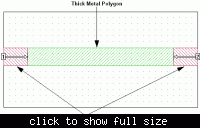mmrobles
Junior Member level 2
I'm investigating the S-parameters of a waveguide-to-coax transition and I want to know how to remove (deembed?) the effects of the waveguide itself to the transition. How to do it? After doing the normal simulation of the transition with waveguide (thru CST), should I make a second simulation using a waveguide structure only then subtract it (S-param in dB) on the S-parameters of the original structure? I'd appreciate any reply. Thanks!
